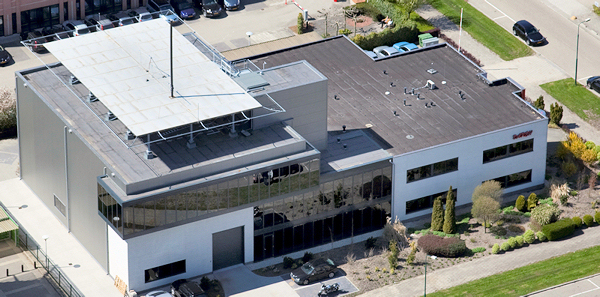Calibration
Brand Independent calibrations for DC/LF and EMC/RF
Calibrations of electronic equipment is one of the activities that Kiwa offers to its clients. these calibrations are under accreditation in the field of electrical quantities. Besides calibrations in the field of DC current, DC voltage and low frequency (test and measuring) equipment, Kiwa is specialized in calibrating high frequency measuring equipment and in particular EMC equipment in a frequency range of (DC) 40 GHz. New the site validation calibrations whereby Kiwa can calibrate shielded rooms (Faraday room) and anechoic chambers under accreditation.

Calibration: the basis for quality
Quality can be defined as "the degree to which a product or service meets the requirements of the customer". In order to determine whether a product meets the customer requirements, measurements are often performed. To ensure that these measurements are reliable, they must be traceable to the results. The only way to ensure traceable results, is to use calibrated measurement instruments. It is therefore that many quality systems as the ISO/IEC 9000 series and ISO/IEC 17025 require that instruments are regularly calibrated, in other words has to be included in a calibration system.
Calibration System
A well-functioning calibration system includes much more than the regular calibration of measuring instruments. In this context Kiwa offers a full range of services for optimum management of your valuable instruments.
- Click here for more about calibrating your DC/LF instruments.
- Click here for more about calibrating your EMC/RF instruments.
Facilities
Calibrations are performed in our ultra modern laboratories in Woerden (The Netherlands). Kiwa has a fully temperature-and humidity controlled room and anechoic room available. In addition Kiwa also possesses an Open Area Test Site (OATS) / antenna test area and an electromagnetic field sensor calibration space.
International Equivalence of Accreditation
Kiwa is ISO/IEC17025 accredited by the Dutch Council for Accreditation (RvA) under number K063 (please see our quality page for the latest version of the scope). Therefore Kiwa is the laboratory to perform your accredited calibration. The Dutch Council for Accreditation (RvA) is a member of the European Accreditation (EA) so the calibration results (reports/certificates) are accepted internationally. Regulation 765/2008 sets out the requirements for accreditation within the Eurpean Union. Furthermore the RvA is a signatory member of IAF and ILAC and thus the reports and certificates issues by Kiwa are accepted worldwide.
The European Accreditation comprises mutual recognition between Accreditation Bodies. See here how to verify the equivalence with other accreditation bodies.
The five steps to check the reliabliity of our certificates or reports:
- Find the RvA accreditation marks on our certificates and reports (RvA and ILAC)
- Find the RvA at the EA site: EA members
- Find our Calibration scope under reference K063 at the RvA site
- Check the quotation, report and scope - Kiwa calibrates against international standards as far as available
- If there is still doubt, check you local accreditation body
Traceability
The reference standards which are used by Kiwa are calibrated periodically by the National Standards Laboratory, which guarantees a direct traceability to the (inter)national standards.
Certificates
The calibration certificates contain an extensive report of the measured results inclusive measuring uncertainty with, where appropriate, illustrations of the measured curves. The total measurement uncertainty of the calibration certificate is firmly set in accordance with the EA document the Uncertainty of Measurement in Calibration"
Complete and fast service
It is important that a customer has calibrated measuring equipment at one's dispTosal at all times. Kiwa can take care of the timely call and schedule of measuring equipment. Also for the transportation of your valuable instruments Kiwa has a solution. If you arrange that the instruments are ready, this may even be without packaging, we ensure safe and insured transportation with our own transport service. If you have more measuring equipment which needs to be calibrated regularly we offer interesting terms.
For more information about the services of Kiwa please fill out our contact form below.